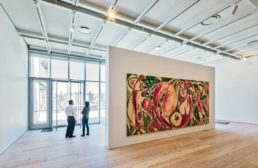Commentary & Criticism
Stars War Over Chicago's Lakefront
The problem with the Lucas Museum? Not just the design but the planning and the politics.
Read More
The Phantom Menace
MAD Architects' Ma Yansong has roiled the waters of Chicago's design scene with his proposal for George Lucas's museum. But does it really pose such a threat to the city's lakefront?
Read More
Copyright ©2024. All Rights Reserved BNP Media.
Design, CMS, Hosting & Web Development :: ePublishing


